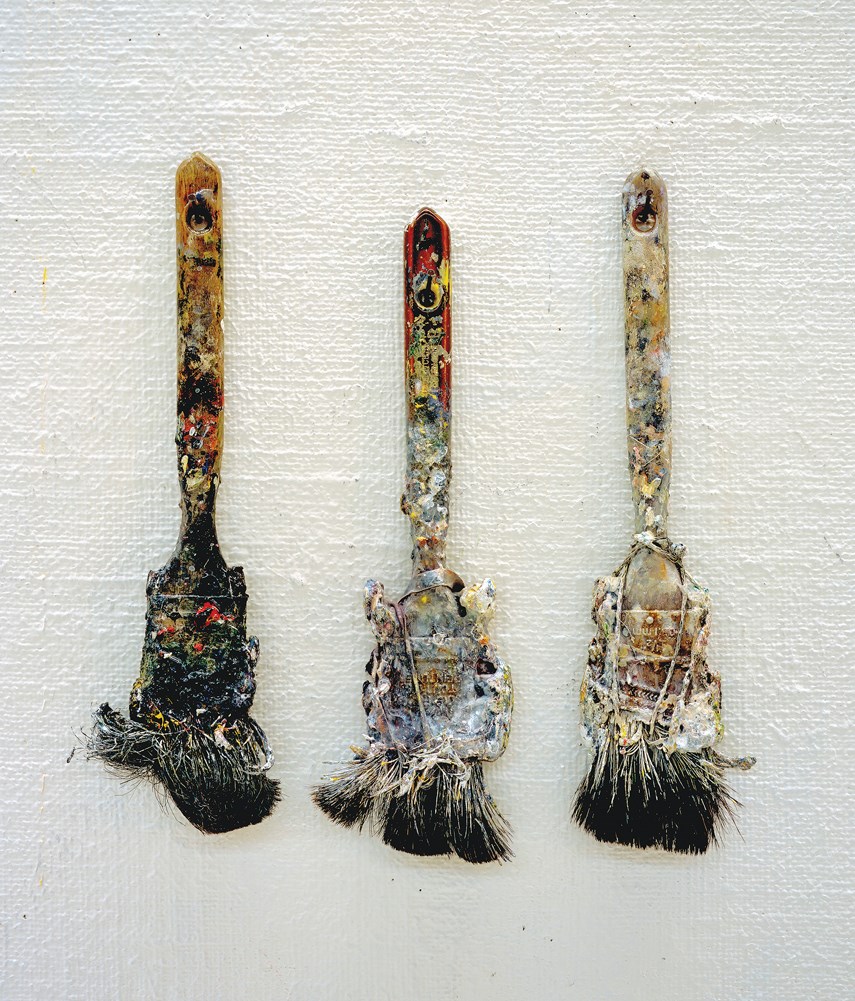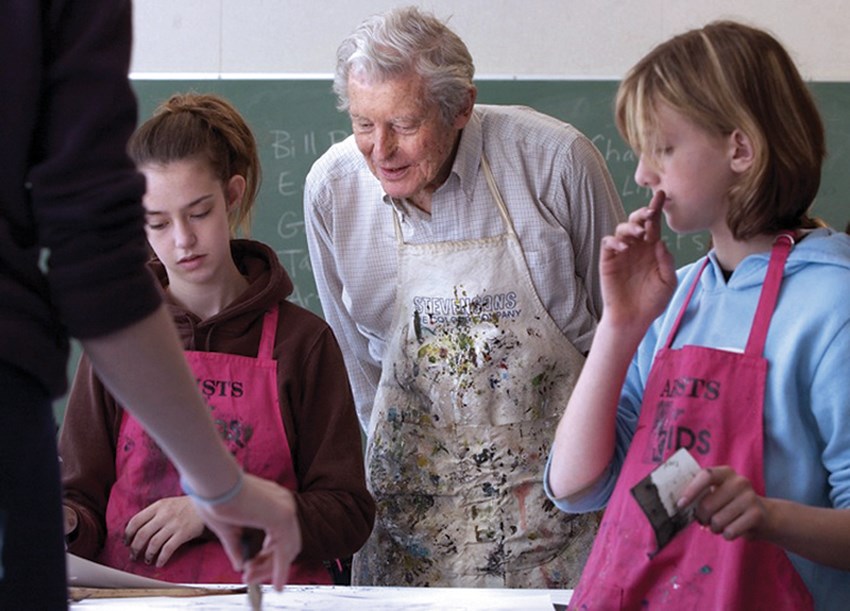The guest of honour, an energetic 85-year-old man slowed slightly by a limp, surveyed the paintings festooning the Vancouver Art Gallery’s hallowed walls.
The VAG was honouring Gordon Smith and, by extension, the seven decades he’d spent in his West Vancouver studio plying brush, sponge and scraper to create striking combinations of colour and light.
Describing the 2004 show in the book Gordon Smith: Don’t Look Back, curator Ian Thom captures Smith’s reaction to a lifetime of his labour.
“Some of those paintings aren’t bad,” Smith commented.
Smith, 100, died at his home Saturday.
Raised in East Brighton, England, Smith was 14 when his mother, in the midst of marital separation, issued two instructions to her sons: pack a bag, and “don’t look back.”
The family settled in Winnipeg in the 1930s. Smith soon found work earning $7 a week painting merchandise for Eaton’s catalogues. Rather than laying off employees between catalogues, the firm sent Smith and his co-workers to the Winnipeg School of Art. Smith had his first professional show shortly before signing up to serve in Princess Patricia’s Canadian Light Infantry during the Second World War.
As the war raged across Europe, Smith drew topographic sketches of landing beaches for platoon commanders until he was wounded by a landmine at Leonforte, Sicily.
“He was almost killed,” says Equinox Gallery owner Andy Sylvester.
From 1943 on, Smith would walk with a limp.
After the war, Smith settled in an Arthur Erickson house with his wife, Marion Fleming. He would paint. She would be both inspiration and critic.

Smith could take a curator’s criticism in stride, Sylvester recalls. But if Marion suggested a painting wasn’t his best, “that painting would be off the stretcher in 10 minutes,” he recalls.
Smith’s prints, from nature views to subdued abstracts, often feature the letter M sketched below the image. It stands for Marion.
Smith trusted Marion’s eye, explains Marius Soska, who created about 50 serigraphs of Smith paintings over 20 years.
“Whenever I made the print, it had to go through her,” Soska reflected in a 2017 interview. “She was a very good critic. She would tell [Smith], ‘This is crap.’”
Smith’s landscapes, thickets of grass and spindly trees play with perspective and tend to be “stranger than they first appear,” writes Florida State University art professor Roald Nasgaard in Don’t Look Back.
Smith got up at 5 a.m. and painted for three hours in his studio before driving to UBC to teach, recalls former student Bill MacDonald.
Smith was an “outstanding teacher” with a passion for art and art history.
“I was lucky to be there,” MacDonald says.
Seeing great art and understanding the concepts behind the brushstrokes can be transformative for a young person, MacDonald realized. It was an idea that stuck with him.
MacDonald was working for the North Vancouver School District when he reached out to principal Ken James to create the program that would become Artists for Kids.
“The talented kids and the right-brain learners really need strong programs,” MacDonald explains.
While he credits the school district for giving Artists for Kids a roof over their heads, he thanks Smith for making sure the program could be financially independent.
“The school district’s always been broke, so we were able to do this self-sufficiently,” he says.
To ensure the long-term survival of the program, Smith set up appointments with some of Canada’s most famous artists, arranging a deal that would involve buying original work and selling prints to support the program.
“In seven days we went from here to St. John’s, N.L. and visited 18 artists,” MacDonald recalls. “We had half a million dollars’ worth of prints and we spent $5,000 on a drum.”
In 2002, MacDonald founded the Gordon and Marion Smith Foundation to, in part, create a failsafe.
“If Artists For Kids ever disappeared, the endowment would be there to support art education,” he says. “I think we’ve got it in place for forever. ...Way to go, Gordo.”
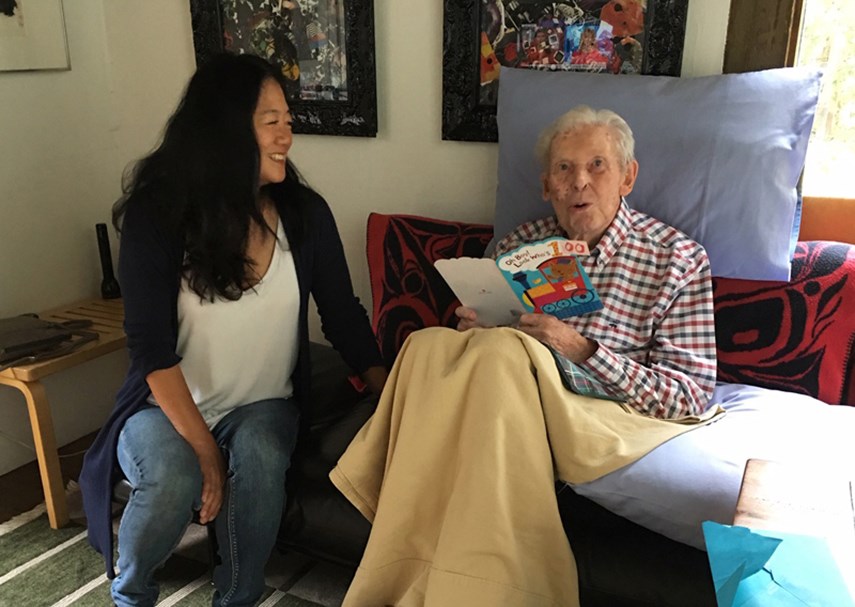
Smith’s greatest contribution may have been his teaching, MacDonald says, recalling the way Smith would pass on his loves for history and spontaneity to talented students.
“Once, he came in and he had a carload of stuff that he’d just scooped up from the beach.”
Smith gave kids a print and they all painted atop a Smith painting, drawing from the seaweed and rocks he’d found.
“Lucky kids,” says MacDonald.
In 2010, noting the way he’d taught young artists and championed emerging talents like Douglas Coupland and Landon Mackenzie, MacDonald asked Smith if he could name the gallery after him.
Smith was typically self-effacing, MacDonald recalls.
“What do I care, I’m going to be dead,” Smith replied.
While he forged a legacy in education in North Vancouver, Smith continued to tinker and dazzle in his West Vancouver studio.
“I feel a painting should be much more than an anecdote or a decoration. Painting should be a re-creation of an experience,” he wrote in Gordon Smith: The Act of Painting.
For 50 years, Jim Thomson has added frames to every Smith painting.
“Gordon was a nice guy to work for, a nice guy to work with,” Thomson says. “He stuck with me all these years.”
A former Royal Canadian Air Force inspector, Thomson ensures the frames are precise, light, and won’t warp.
“He knew a good thing when he saw it,” Thomson laughs. “I shall miss him greatly.”
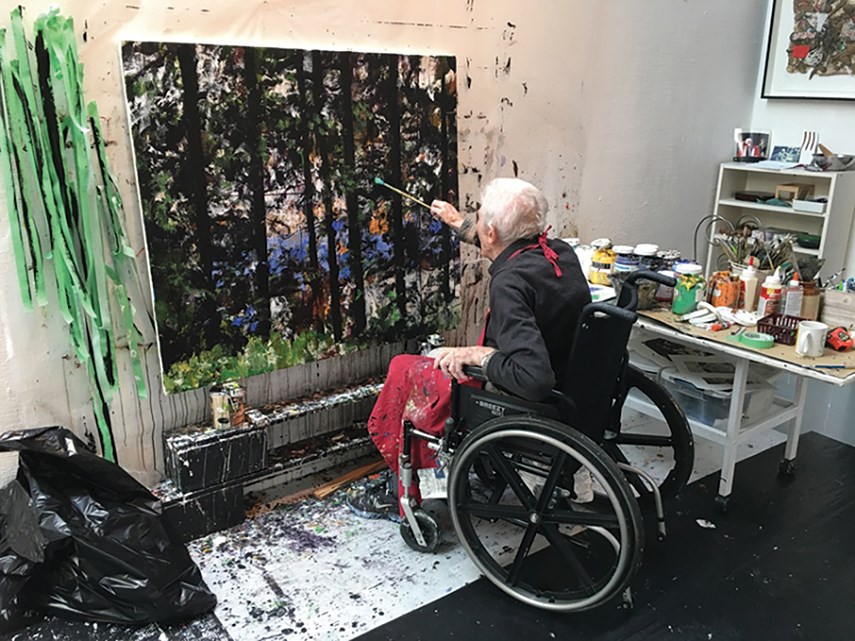
Smith was a puzzle, Thomson notes. Both men served in the Second World War but never talked about it.
Smith’s war experience was profound but private, Sylvester says. But in the 1990s Smith crafted a series of paintings writer Eric Andrew-Gee called: “a howl of sublimated pain about his war experience.”
After painting greys in the 1970s and ’80s, Smith “went black,” MacDonald says.
Smith expected the paintings to be poorly received. A collector walked in the door and immediately offered to buy a painting for the gallery.
“It was one of those moments of being an art dealer where you renew your faith in humanity,” Sylvester says.
Despite accolades that included the Order of Canada, Smith couldn’t help but be “highly skeptical of his own genius,” Thom writes.
It could almost be infuriating, Sylvester recalls.
“Even to meet the Queen you would have to beg him to wear his medals,” he laughs.
Toward the end of his life, Smith would talk more about the war, about the bonds forged so quickly and felt so deeply, Sylvester says.
Art was both calling and craft for Smith.
“To him it was a profession and he painted every day,” explains West Vancouver Art Museum curator Darrin Morrison. “He needed to practise, to go to work.”
While Smith was “in high demand,” Morrison would see him fairly frequently. In 2015 Smith donated his personal art collection to the museum.
But Morrison saw him less frequently in recent years, he says.
“His legs gave out,” MacDonald says. “Finally, he couldn’t get to the studio.”
“He was in his studio absolutely every day till last year,” MacDonald notes.
It can be easy to take Smith for granted, Soska once reflected.
“I hope they realize the talent of Gordon Smith,” he says.
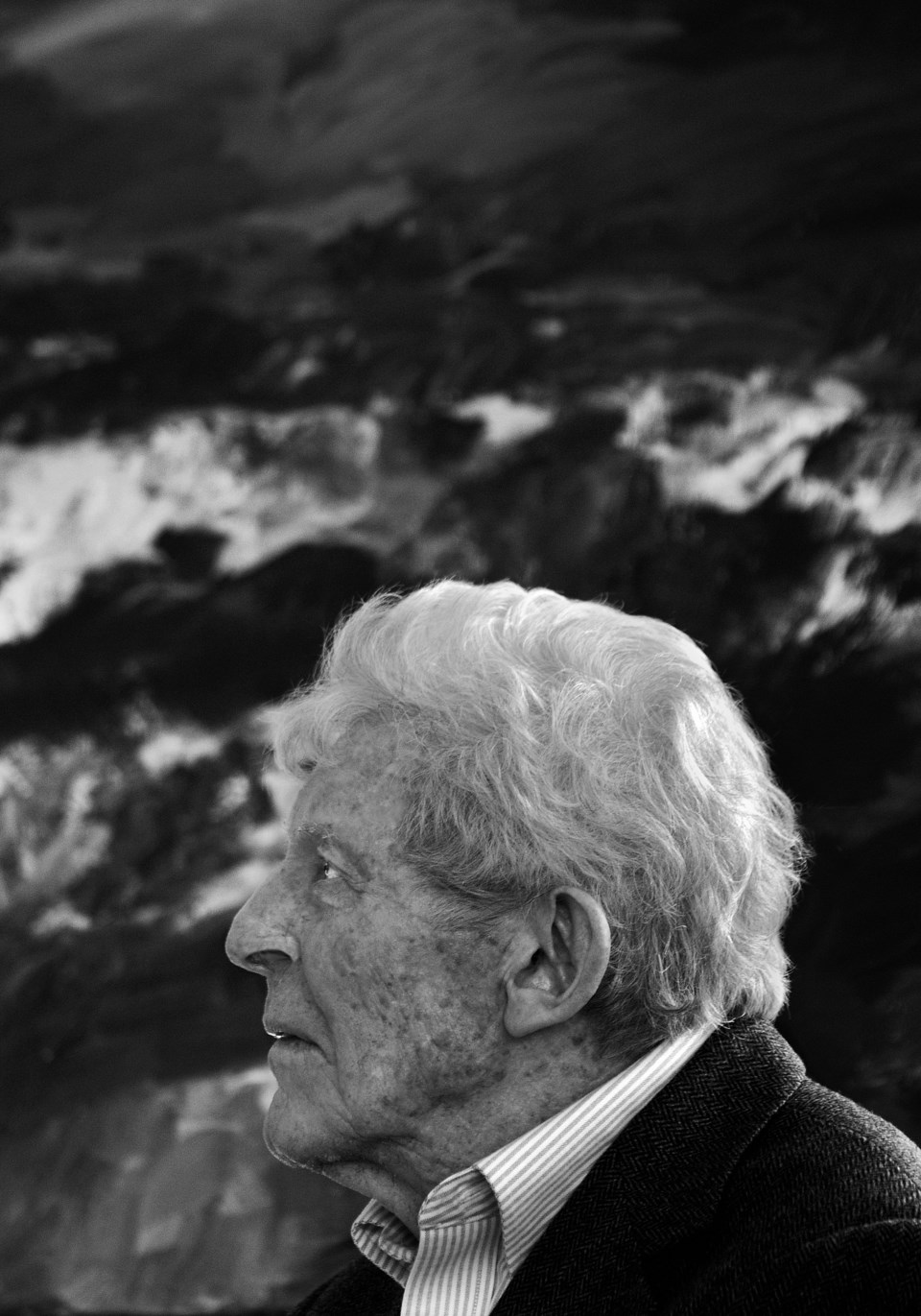
In December, on a day when the power went out in West Vancouver, newly appointed Artists for Kids director Allison Kerr made the trip to meet Smith.
“I said to him, ‘I’m one of the many, many people that you’ve never met who you have inspired,’” Kerr recalls.
Smith held her hand and gave her a kiss.
“He said, ‘this is only through love.’”
“He never quit being a teacher,” MacDonald recalls. Imitating his former instructor, he asks: “Are you painting? I want to see it.”
For 75 years, Smith painted with ambition and a sense of purpose. And he did it every day, Sylvester says. Smith was a living example of art’s power to turn us into better people.
“We can all learn from Mr. Smith and his 100 years on this Earth,” Sylvester says.
